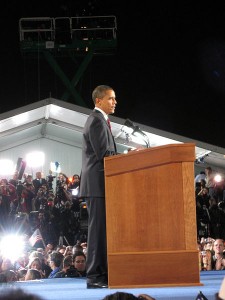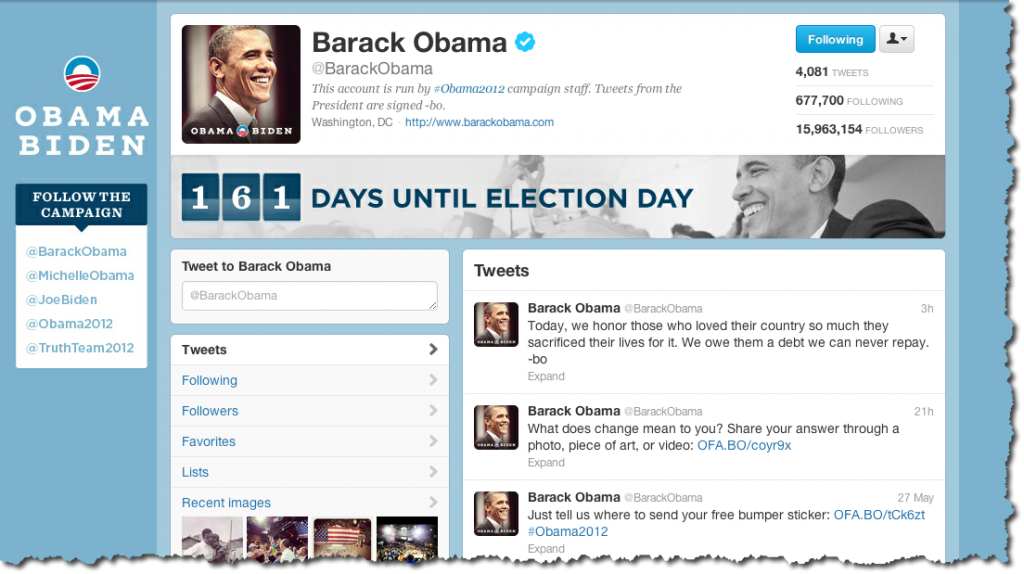Remember?
Remember the night of November 4th, 2008, when Senator Obama took stage in Grant Park to give his victory speech? The massive crowd that night that cried with joy? The Kennedyesque way the the young family walked out onto the platform? It all seemed like Camelot had returned.
But do you also remember how unlikely it seemed, a year before, that the winner of that night would have been Barack Obama? How big the challenge, how high the hurdles he had to overcome to successfully take on the presumptive front runners in the primaries and general election?
If you were an Obama supporter, you were ecstatic that he had run a nearly perfect campaign that narrowly defeated Clinton in the primaries and went on to win the general election.
If you were a McCain supporter, on election night you were left to shake your head in disbelief and relive a combination of campaign mistakes and unfortunate timings that tanked that campaign. You could only wonder, in the end, what could the GOP campaign have done better and what did Obama do that McCain didn’t?
Very shortly after the election, an answer emerged: Obama’s use of social media had given him a key advantage in the race (see notes). Whether this is really true or not is something political scientists may argue for decades. But at the time there was a kind of symbiotic hype curve that elevated both social media’s prowess and Obama’s mastery of the media. So how did Obama come to be such a social media maven?
The path to building his 2008 social media juggernaut may have had its origins in a humble Facebook page the then Senator set up in 2006. It was at that point he met Chris Hughes, one of the founders of Facebook, who helped him get his fan page working. Shortly thereafter, around January 2007, Hughes quit Facebook to join the Obama campaign. Hughes brought a critical insight into the Facebook platform and social media in general. And the campaign did not rely on just Hughes alone: Obama had also hired Joe Rospars, who developed web expertise in Howard Dean’s 2004 campaign and had gone on to co-found Blue States Digital, an early new media agency.
Obama showed his focus on social media with a February 2007 meeting with Marc Andreessen, the inventer of the first popular browser and then & current Facebook board member. Andreessen is quoted as saying:
It was like a guy in a garage who was thinking of taking on the biggest names in the business … What he was doing shouldn’t have been possible, but we see a lot of that out here and then something clicks.
Something did click for the Obama campaign!
For many people — politicians, business leaders, and the public — the campaign’s victory was a first glimpse at how powerful social media could be. The Obama team innovated and learned on the fly and showed us, in the end, what could be done with the right tools.
But the 2008 campaign did not teach the Obama team everything there is to know about social media — at least not everything they need to know about social media as it stands today. In 2008, Facebook, MySpace, text messaging, email and a custom web site were the core of the efforts. Back then, Twitter was just barely on the radar: @BarackObama had only about 120,000 followers.
Which brings us to today …
With Obama now having almost 16 million followers on Twitter, Twitter’s importance to the campaign is has grown exponentially to match the follower count; Twitter has moved from barely there to front and center. And so the Obama campaign is going to have to invent new ways to harness Twitter if it’s going to help Obama win reelection. If it does, people will point to his use of Twitter as groundbreaking. If Obama loses, though, his use of Twitter will be a lesson in missed opportunities and an opposition that’s caught up and caught on to social media.
Make no mistake, the Obama campaign knows this and is aiming for groundbreaking by aggressively pursuing all uses of social media in this election cycle, including Twitter. The team this election includes some repeats from 2008 like Joe Rospars, who is back as Chief Digital Strategist, bringing along his Blue States Digital alum Teddy Goff as Digital Director. Perhaps more importantly, the campaign has built up an extensive new media and technology staff — large enough for any hot Silicon Valley startup.
So far, it’s been working fairly well: Obama has been able to dominate the social conversation. As I wrote a short while ago, Obama’s engagement in Twitter dwarfs Romney’s, and Obama is generally ahead of Romney on other platforms (for example, on Facebook). Even if the GOP contender’s lag has been caused by the brutal primary season, Romney has a long way to go to catch up. True, we’ve seen battles break out over hashtags, kerfuffles over stay-at-home moms, and strange claims about who’s winning on Twitter. But the raw numbers don’t lie – Obama’s lead over Romney in social media is similar to Obama’s lead over McCain 4 years ago. That doesn’t bode well for Romney, but his campaign knows that.
What has the Obama campaign done so far to build its lead? What are they doing now to maintain it? What might they do between now and the November election to extend it? These are all fascinating questions, not just for the political ramifications, but for what it teaches us about how social media can be used by other candidates, businesses, or people with any sort of message to get out.
The answers to these questions are not out in the open while the campaign is underway. A few articles have appeared here and there that tease us about aspects of the digital campaign, giving us a glimpse into the campaign’s strategy. But now that the Obama team has shifted into high gear we can begin to investigate what the campaign is doing on Twitter and identify some of the tools and approaches they are using to win the social media battle.
In subsequent posts in this series, I will look at the various forms of engagement the Obama campaign is using, explain how it works, and then discuss how others — candidates or businesses — can adopt similar techniques — even without a top notch social media team.
There’s a lot to be learned for both neophytes and experienced pros. To stay tuned to the story, please follow me on Twitter and subscribe to updates to this website.
Let’s start at Secret #1! And at any time you can see a list of all posts in this series by visiting the overview.
Notes:
Some interesting articles about 2008:
- The Obama Campaign: A Great Campaign, Or The Greatest? | Wired.com
- Obama’s Social Media Advantage | Read Write Web
- Propelled by Internet, Barack Obama Wins Presidency | Wired.com
- 140: The 2008 election’s other magic number | MSNBC
(Notes that John McCain had only 4,600 followers on Twitter) - The Vote: A Victory for Social Media, Too | Business Week


